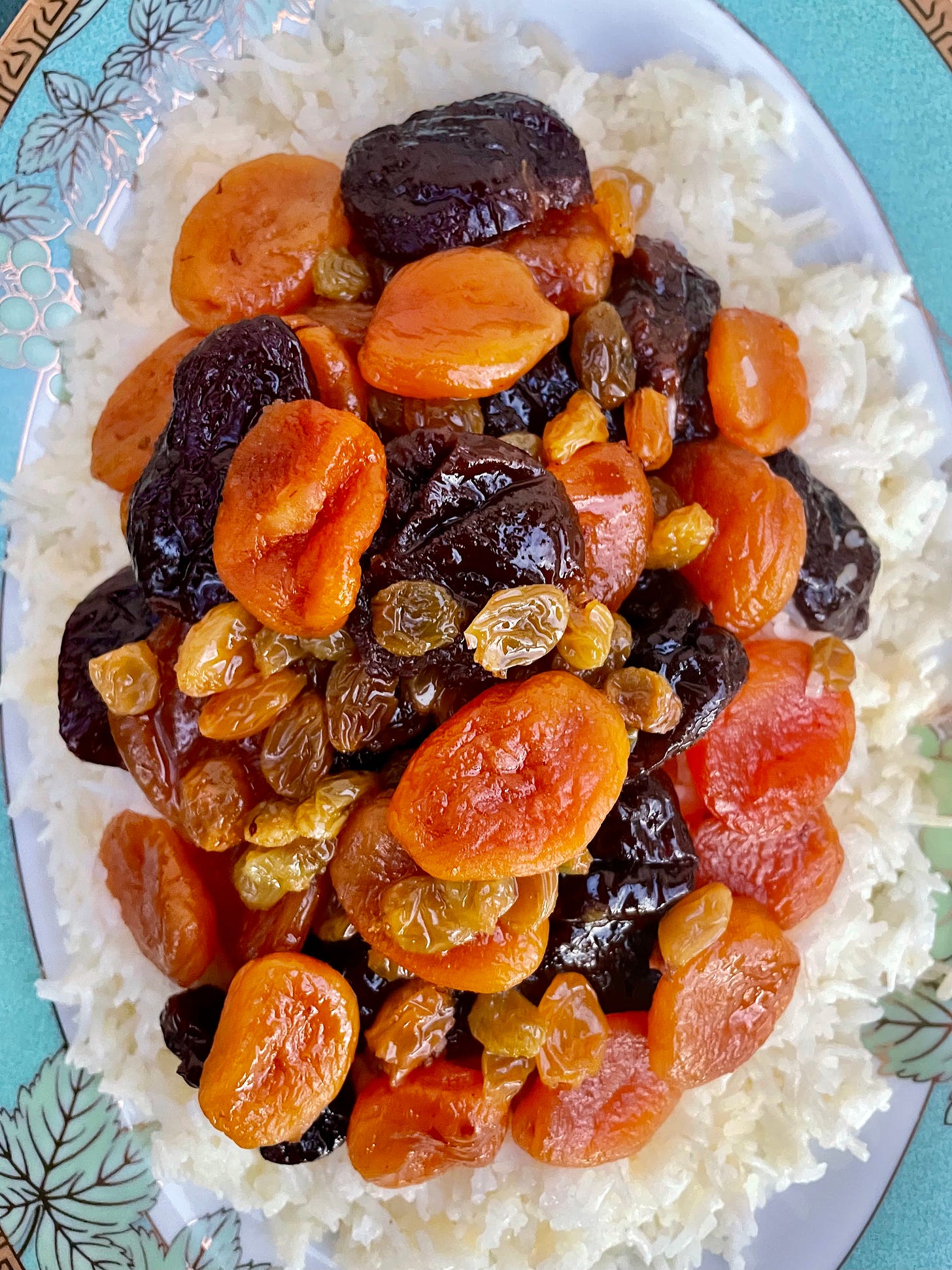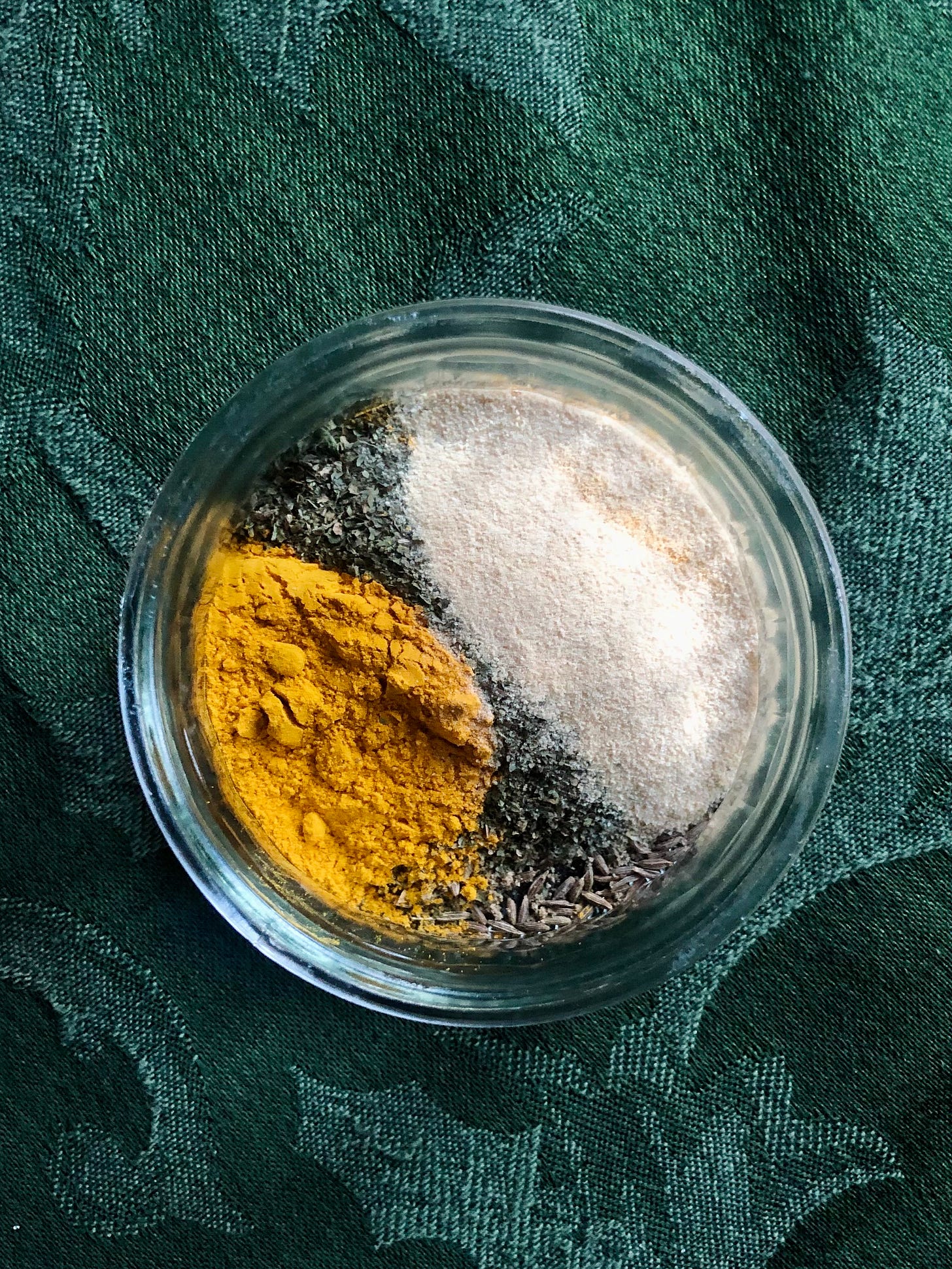This is an installment of Like Gold, a food newsletter written by Dayana Sarkisova. If you’d like to subscribe and stay a while, click the button below.
They say one of the marks of a good newsletter is regularity. A schedule. These are things brought upon by discipline, which is, unfortunately, something I don’t have.
But I’m not here to talk to you about my personal traits, or lack thereof. I’m here to talk to you about our Lord and Savior Jesus Christ (sort of). For better or for worse, Armenian culture is so deeply intertwined with religion that regardless of whether or not one considers themselves devout, even our everyday traditions reflect orthodoxy.
My family’s relationship with religion is an interesting one; and not one I’m certain I’m equipped to unpack yet. We don’t make it to church every Sunday, or even most Sundays, and religion is rarely a topic of conversation. But still it remains front and center in our identity — and I reckon that may be the case for many refugees. Often, I’m not certain whether we do something because we’re Armenian or because we’re Christian Orthodox. When you’re forced to flee your own home because of your religion — when you become a refugee simply because of what you believe in — I think it becomes impossible to ever truly lose that part of yourself, or the traditions that come with it.
Because the Armenian Apostolic Church mainly follows the Gregorian calendar, Easter falls on the same Sunday for us as the Western world. We dye eggs, bake choreg and kulich — tall, temple-like cakes drizzled with white frosting — and greet each other with “khristos voskrese.” After church we gather to eat lamb, and traditionally, we serve it alongside a rice pilaf, or “plov,” that’s covered in dried fruit.


Growing up, I was dazzled by the bejeweled mountain of rice. Dotted with vibrant orange and purple hues, it felt like our everyday rice recognized it was a holiday and dolled up for the occasion. Any combination of apricots, plums, light and dark raisins were added, sometimes along with crumbled walnuts and fresh pomegranate seeds.
This year’s holiday has a somber undertone to it, however. The destruction of Armenian churches is a common theme throughout history, and last fall’s war was no different. An Armenian church was shelled by Azerbaijani forces not once, but twice during battle while civilians and journalists were inside, in a move the Human Rights Watch called a war crime. Governments have continued to carry out ethnic cleansing in the form of rewriting the history of historic Armenian churches, or simply destroying them altogether, as reported by the BBC.
For the Armenian community, sadly none of this is new, or even surprising. Waking up to a beautiful church or religious artifact lost is a regular occurrence. But personally, this past year has served as yet another reminder of the importance of preserving tradition in any way possible, even if I don’t necessarily feel that pull to a church on Sunday. Because ultimately, what is tradition, if not spirituality?
My mom and I cooked this plov together last winter, and I took diligent notes on her process and musings at the time (“I don’t know how much butter I used, Daya. There’s no such thing as too much butter. Does that make sense?”).
Today I’m layering her version onto a basic rice preparation detailed in an old Armenian cookbook I inherited from my grandma. The entire chapter on plov hinges on this preparation, which results in a crispy crust, soft rice — and yes, lots of butter throughout. From there, the possibilities are endless. She added cubed sirloin to the onion mixture outlined below, but I’ve kept this vegetarian for flexibility.
Armenian Easter plov with dried fruit
For the rice:
2 cups of rice
6 ½ cup water
6 tablespoons ghee
Salt
For the fruit:
1 tablespoon ghee
1/2 cup water
½ cup raisins
½ cup dried apricots
½ cup dried plums
For the onion mixture:
2 tablespoons ghee
2 large sweet onions, diced
1 teaspoon dried cilantro
1 teaspoon dried parsley
1 teaspoon granulated garlic
1 teaspoon turmeric
½ teaspoon whole cumin
½ teaspoon ground cumin
Salt
Soak rice in salted water for 40 minutes.
In a large pot, bring 6 ½ cups salted water to a boil.
Drain rice, rinse it well and add it to the pot. Boil for 10-15 minutes, until the rice has softened slightly but is still al dente. Drain the rice and rinse it well again. Set aside.
In the same pot, melt 6 tablespoons ghee. Add enough rice to coat the bottom of the pot by one inch and mix well. Add the rest of the rice over top, cover tightly with lid and cook on the lowest possible flame for 45 minutes.
In a small pan, melt one tablespoon of ghee. Add half a cup of water and all of the dried fruit. Cover with a lid and let the fruit gently steam over a low flame for as long as it takes you to cook the rest of the recipe. If it seems the water has evaporated at any point, add more to the pan so the mixture stays hydrated. (You don’t want the fruit to fry.)
In a medium separate pan, warm two tablespoons of ghee over medium-low heat. Add onion, all of the spices, salt to taste and sauté until just golden brown.
Spoon rice onto a large platter. Top with onion mixture, then fruit. Make sure each serving includes all three layers.
Pick up my tab
Reading: Why This Wave of Anti-Asian Racism Feels Different, a poignant Q&A with Cathy Park Hong in The Atlantic that touches on so many important topics; Italian Mafia Boss Brought Down by His Own Cooking Vlog in The Cut, a tale featuring my dream combination of true crime and cooking; Thundercat On 'It Is What It Is,' Losing Mac Miller And Learning To Do Nothing, an old interview in NPR which includes a Mac Miller Tiny Desk anecdote that makes me want to weep.
Watching: Peaky Blinders, which has somehow led me to discover there’s a huge Russian Peaky Blinders community on TikTok and it’s quite thirsty. I’m slightly confused by the intensity of the crossover (maybe it’s the whole affinity for mob crime?), but the fact that I married an (O’) Dooley checks out.
Ordering: God Spare the Girls, a painfully beautiful novel written my friend Kelsey McKinney. Set in Texas, it explores the relationship between two sisters whose father is the head pastor of an evangelical megachurch. It releases this summer, but you can preorder it now.
Drinking: Le Clairet 2019, aka “The Perfect Red” from Domestique. Never did I think I'd care so deeply for a Cabernet Sauvignon, but it really does deliver on its name.





💔❤️
Also:
“There’s no such thing as too much butter. Does that make sense?” 💖💖💖